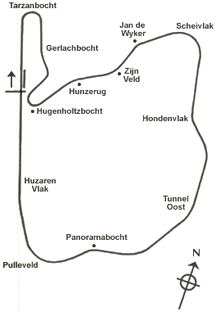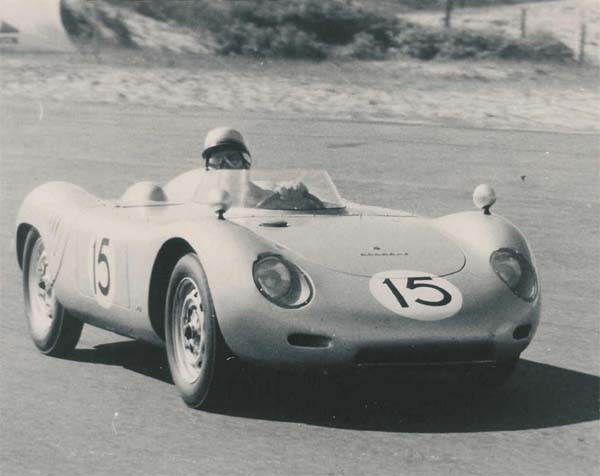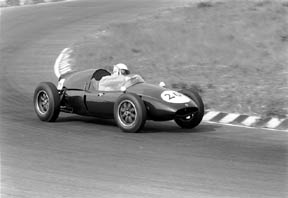Zandvoort
While its surrounding countries lived and breathed motorsports for half a century, all motor racing that the Netherlands had seen until 1948 was a bit of fun on the boulevard of that other fancy Dutch seaside resort of Scheveningen and some sideways action on the horse-racing course at Duindigt (both near The Hague) before the visionary Zandvoort mayor Van Alphen invited Holland’s best racers to put on a show on a temporary eight-shaped track around the streets of his village in the dunes.
The circuit was laid out in the northern part of town, comprising the Vondellaan and the Van Lennepweg. Today these roads lead up to the main gates of the race track. The event saw several touring car races, with the undoubted highlight being a demo run by Manfred von Brauchitsch in his Mercedes W154. Things were shaping up for the creation of Holland's first permanent race track. That is, until the Nazis decided to invade their neutral neighbour at the North Sea. In the first days of May 1940 the Netherlands were trampled under foot, and the plans for a permanent circuit were the last thing on Zandvoort people's minds.
But Van Alphen's vision was not lost in the war. Au contraire. Just months into the German occupation the mayor rekindled his ambitions. In 1941 a map was presented at the Annual National Fair in Utrecht, on which a track-shaped road can be seen winding through a new park area that is envisaged to appear on the north side of town. Also included in these plans was the erection of a new forest, with connecting roads leading through it to link up with the streets that formed the temporary race track in 1939. But how could they actually go on and build the darned thing? There was this tiny matter of a war going on.
Leave that to Van Alphen.
The cunning mayor did not just order to start work on the project, he even managed to con the occupying forces into helping him build the foundations! With some 40 hotels and 600 coast-line houses demolished and Zandvoort's northern part cleared off the face of the earth to prevent the allies from using the Zandvoort beach as a landing site, the north side of town was far from a glorious park area. It was a ruinous mess. But Van Alphen made the proud Germans believe that he wanted to pave the way for a Paradestraße to honour the victors of the war. They fell for the ploy blindly - with a striking immediate effect: many of Zandvoort's workers were not put on transport to Germany to contribute to the Nazi war effort but stayed behind to clear the ruins and turn them into the Parade Road's first layer of foundation. The Germans were well satisfied with the Dutch gift but of course Van Alphen had quite another type of victory celebration in mind for the end result… Unsurprisingly, to this day the circuit's official name is the Burgemeester Van Alphenweg (Mayor Van Alphen Road).
After the war the mayor was on his own with his plans to complete the circuit on top of the layers of rubble. Like most other European countries the Netherlands were on the rebound of five years of German occupation. The country was virtually bankrupt and all effort was channelled to rebuilding the nation's vital infrastructure. Zandvoort and the Royal Dutch Automobile Club (KNAC) decided that they would do the work themselves, and got together with members of the Royal Dutch Motorcycling Association to determine the shape of the track. In July 1946, 1927 Le Mans winner Sammy Davis was brought in as a track design advisor. Tarzan was part of the earliest plans, and the rest of the lay-out was simply created using the existing roads in a sensible way.

As an aside, famous track designer Hans Hugenholtz cannot be credited – as he often is – with the design of the Zandvoort track, although he was heavily involved as the Nederlandse Automobiel Ren Club chairman (NARC, the Dutch Auto Racing Club) before becoming the first track director in 1949. He did take a leaf out of the Zandvoort book when designing such tracks as Suzuka and Zolder.
In February 1948, mayor Van Alphen went into retirement, throwing the finalisation of the project into serious doubt. But his successor, H.M. van Fennema, continued where Van Alphen left off and set about completing the circuit with its top layer. They worked all through the spring of 1948 to finish the pit area and a modestly sized grandstand – and couldn't wait to get the first race started. With no previous organizing experience in the field of motor racing events the KNAC wisely decided to contact Desmond Scannell of the British Racing Drivers Club, the BRDC secretary agreeing to organize the first Zandvoort Grand Prix.
And so the first race at Zandvoort became a British national event, albeit one with a fine turnout of 21 entries, of which some 14 cars appeared on the final's grid on August 7, with many of the big British names present and accounted for. The final was a cracker, with pole man Parnell running into problems but recovering to third, leaving a titanic race-long battle between Prince Bira’s ERA R5B ‘Remus’ and Tony Rolt’s remarkable Aitken-Alfa Romeo Special, which was was one of the original Alfa Bimotores without a front engine. In the end the unnerved Siamese prince prevailed, giving no quarter to Rolt, who finished an extremely close second.
The success of the inaugural Zandvoort Grand Prix sparked off an almost unbroken run of Dutch GPs, counting towards the World Championship almost since the series' inception. The track was universally loved for its challenge and looks, and feared for the fearsomeness it required. Loved as well as feared it may have been, Zandvoort was never loathed for being too dangerous. Not even the cruel deaths of Chris Lambert, Piers Courage and Roger Williamson could change that. Why? It was a track that allowed you to race. It comes as no surprise that Carel loved Zandvoort just as much as any of his contemporaries.
The Dutch motor racing scene may never have figured prominently among the world's best, its track was on center stage for the good of almost 40 years. And with the annual Marlboro Masters attracting the finest F3 talent of the world to the new-style seaside track, it still manages to capture the center of attention once a year.



